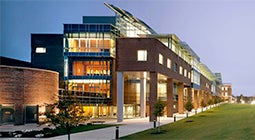Translational research is transforming the way science has operated for decades, bridging the gaps that separate basic scientists and clinical researchers. To improve human health, scientific discoveries must be translated into practical applications. Such discoveries typically begin at “the bench” with basic research, in which scientists study disease at a molecular or cellular level, and then progress to the clinical level, or the patient’s “bedside”.
Optical imaging technologies, which exploit the physics of optical propagation in tissue, add many important advantages to the imaging options currently available to physicians and researchers. Optical imaging and spectroscopy technologies provide dynamic molecular, structural and functional imaging with the potential to expand clinical opportunities for screening, early disease detection, diagnosis, image guided intervention, safer therapy, and monitoring of therapeutic response.
Founded in 2007, Our goal is to develop quantitative thick-tissue optical imaging platforms for pre-clinical and clinical applications. We focus on three main areas:
- Design new optical tomographic imaging instrumentation;
- Develop new reconstruction algorithms for quantitative volumetric imaging;
- Investigate optimal experimental and theoretical parameters for functional, molecular, and dynamical optical imaging.
Förster Resonance Energy Transfer (FRET) is the radiationless transfer of energy from an excited donor fluorophore to an appropriate acceptor in close proximity. The energy transfer only occurs between fluorophores separated by less than ~10 nm allowing to sense protein interactions. However, to date, FRET applications are confined to microscopy or spectroscopy of cells culture or cell lysates. It is critical to translate FRET assays to small animal imaging where the in vivo physiological context is essential for drug development, the study of diseases, and fundamental cellular and molecular biology. We develop new methods to perform quantitative FRET tomography in live animals.
To perform quantitative tomography, it is essential to employ an accurate mathematical model to describe the propagation of light in biologic tissues. The Monte Carlo method is a statistical method used to simulate and track individual photons as they propagate. This method is considered the gold standard to accurately model light propagation in either diffusing or non-diffusing media with flexibility to model arbitrary boundaries. We develop massively parallel computational platforms that allow computing time-resolved Jacobians with the pMC, the adjoint method (aMC) and/or the midway adjoint method (mMC).
There is a major drive in Tissue Engineering towards creating functional tissues or organs in vitro in 3D thick scaffolds. Such scaffolds are generally thick (few mm) and constructed using biomaterials that are highly-scattering (such as elastin or collagen). Hence, laser scanning microscopy techniques (e.g., confocal and two-photon) cannot image entirely these scaffolds as the depth penetration of such techniques is still limited by the scattering properties of the sample. Thus, there is a critical need to develop new imaging techniques that can image well beyond the penetration limits of conventional microscopy. We develop novel multispectral mesoscopic fluorescence molecular imaging platform to this end.
We are pioneering wide-field optical tomography based on time-resolved patterned illumination for preclinical studies. Such innovative approach allows to acquire dense spatial and temporal tomographic data-sets over the animal whole-body at unprecedented acquisition speeds. In our instrumental approach, we have implemented a wide-field excitation scheme based on micromirror technology to generate time-resolved illumination patterns. This new approach offers numerous advantages compared to current excitation scheme:
i) exceptionally fast acquisition of spatially dense tomographic information over large volumes;
ii) injection of a greater number of photons into the overall tissue leading to measurements in transmittance with higher SNR, especially in fluorescence applications (greater sensitivity to minute fluorophore concentrations);
iii) higher number of useful detector measurements for pattern due to spatially extended sources;
iv) faster reconstructions (forward calculation and inversion) through the use of smaller weight matrices (owing to lower number of sources being used). Wide-field optical tomography allows for quantitative functional imaging and lifetime multiplexing studies.

